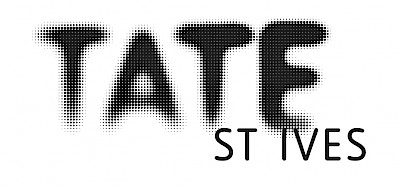Aquatopia: The Imaginary of the Ocean Deep
- Aquatopia, installation view, Nottingham Contemporary, 2013. Photography by Andy Keate.
Ninety percent of the earth’s oceans remain unexplored. Science knows outer space better than the ocean deep. Scores of new species, weirder than any fiction, are found each time a submersible descends to the ocean’s deepest trenches.
In the absence of knowledge the deep is a site where imagination has full rein. The ocean has always bred monsters, and like outer space has been a setting for science fiction since Jules Verne. But unlike outer space, the oceans are part of our own planet – and by extension a part of us too.
Throughout recorded history the deep has been the site of shared myths, subconscious fears and unnamed desires. Aquatopia, then, is less about the ocean as it actually is – it is about how it lives in our heads.
This major exhibition brings together over 150 contemporary and historic artworks that explore how the deep has been imagined through time and across cultures. Sea monsters, sirens, sperm whales, giant squids, octopi, submarines, drowned sailors and shipwrecks are all portrayed here by many of art history’s “greats” JMW Turner, Odilon Redon, Hokusai, Barbara Hepworth and Oskar Kokoshka among them. Steve Claydon, Wangechi Mutu, Juergen Teller, Alex Bag, Christian Holstad and Mikhail Karikis are some of the many celebrated contemporary artists amongst whose oceanic – inspired artworks are shown here too.
The exhibition is a collaboration with Tate St Ives in Cornwall, where it was shown from 12 October to 26 January 2014.
A fully illustrated catalogue is available through our online shop for £22.99 plus posting packing. It includes new essays by Philip Hoare, Simon Grant, Kodwo Eshun and Alex Farquharson, it also presents an anthology of sub-aquatic texts by Stacy Alaimo, Maya Deren, Celeste Olalquiga, James Hamilton-Paterson, Marcus Rediker, David Toop, Marina Warner and Wendy Williams, as well as literacy works by Hugo, Lovecraft, Shakespeare, China Mieville, Adrienne Rich, Jules Verne, Derek Walcott and Vernon Watkins.
The imaginary oceans these artworks explore represent both the limits of our knowledge and the crossing of existential thresholds. Oceans are places of metamorphosis where “we suffer a sea change into something rich and strange”, according to Shakespeare in the Tempest. Our wild imaginings about the ocean aren’t simply escapist. The ocean is the keeper of political histories that continually resurface in the present day. Ocean myths both ancient and contemporary have been shaped by conquest and colonialism, and by the tide
of gender politics too.
Some of the world’s great literature draws on the ocean, and Aquatopia has strong links with literature too. Books it refers to include The Odyssey, The Tempest, The Ancient Mariner, Moby Dick and 20,000 Leagues Under the Sea. Allusions to this great tradition of maritime literature can be found in many of the art works. The exhibition catalogue, published in partnership with Tate, contains both classic literary texts and essays by leading contemporary thinkers on the sea.
Aquatopia begins in Nottingham, the city furthest from the coast, but at the centre of an island nation whose history has been shaped by its relationship to the sea.
In October 2013 it travelled to Tate St Ives, our partners in this exhibition, whose galleries overlook a relentless surf.
Exhibition:
Aquatopia: The Imaginary of the Ocean DeepDates:
20 Jul 2013 – 22 Sep 2013Artists:
- Alex Bag & Ethan Kramer, Hernan Bas, John Bellany, Guy Ben-Ner, Ashley Bickerton, Rudolf & Leopold Blaschka, Marcel Broodthaers, Bernard Buffet, Spartacus Chetwynd, Steven Claydon, David Cox the Elder, Liz Craft, Dorothy Cross, Salvador Dalí, Francis Danby, Alan Davie, Mark Dion, Mati Diop, Gustave Doré, Ant Farm, Dee Ferris, Stanhope Forbes, Lucian Freud, Vidya Gastaldon & Jean-Michel Wicker, Ernst Haeckel, Barbara Hepworth, Katsushika Hokusai, Christian Holstad, Herbert James Draper, Mikhail Karikis, Oskar Kokoschka, Utagawa Kuniyoshi, Sean Landers, William Lionel Wyllie, Andrea Mantegna, Ana Mendieta, Madsen Mompremier, Wangechi Mutu, Willem Ormea, The Otolith Group, Jean Painlevé, Eric Ravilious, Odilon Redon, Germaine Richier, Henry Scott Tuke, Shimabuku, Simon Starling, Ricky Swallow, Juergen Teller, Wolfgang Tillmans, JMW Turner, Marcel Van Eeden, Alfred Wallis, Edward Wadsworth, George Wallace Jardine, Karl Weschke, Jennifer West, Hannah Wilke, Frantz Zéphirin
Curator:
Alex Farquharson with Martin Clark
Supported by:
